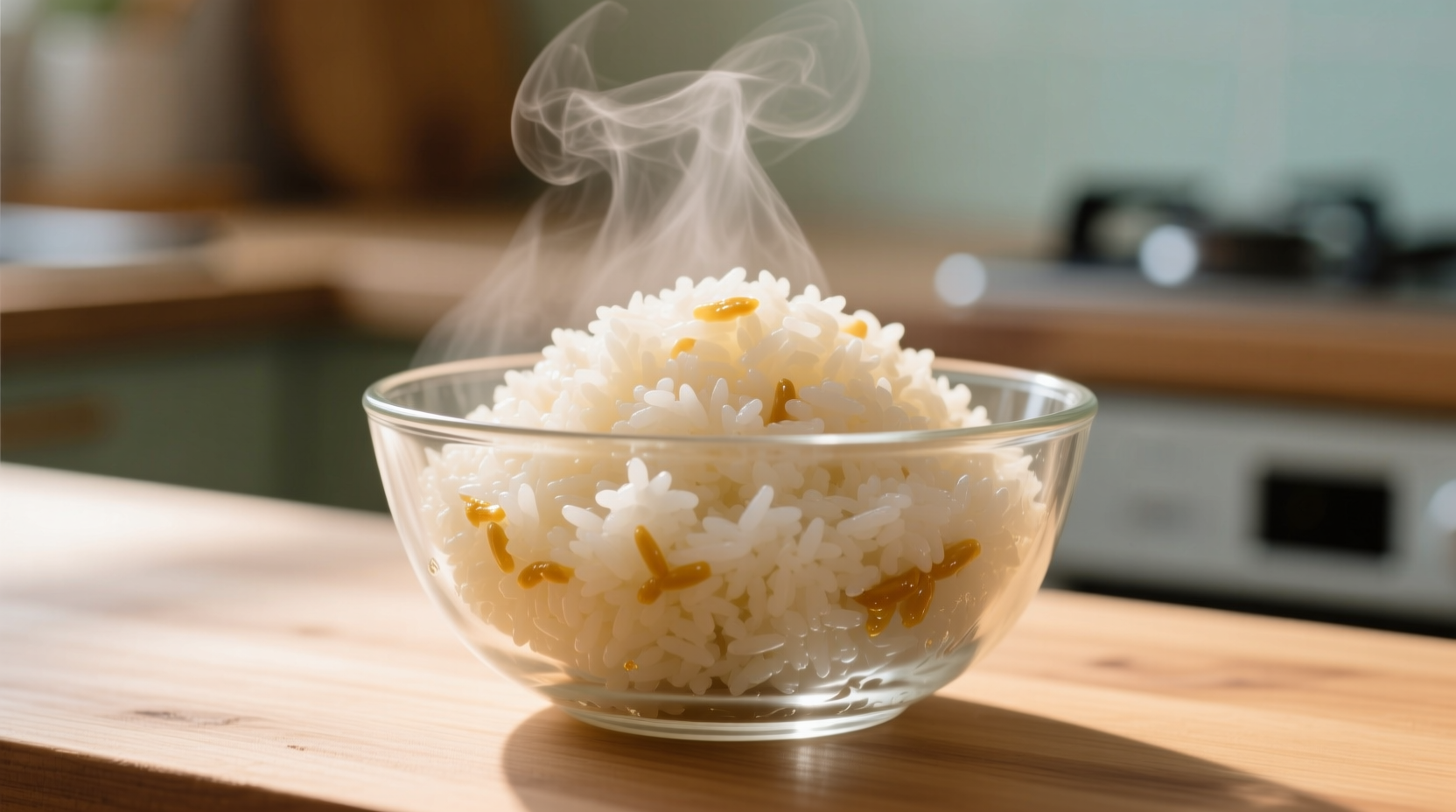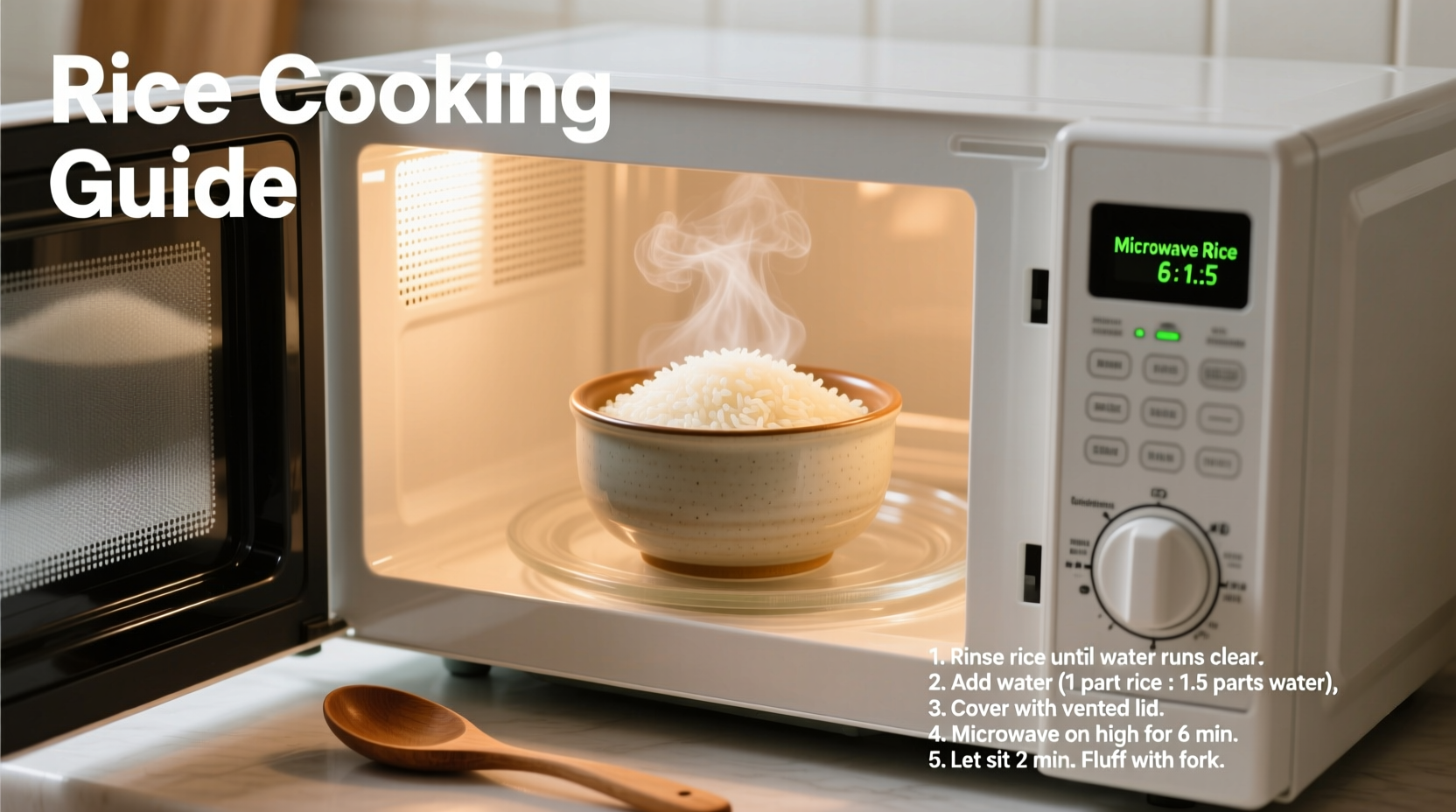Forget sticky, unevenly cooked rice. Microwaving offers a surprisingly effective method for achieving restaurant-quality results with minimal effort. This guide reveals the precise water-to-rice ratios, timing adjustments for different varieties, and critical resting periods that transform microwave cooking from hit-or-miss to consistently perfect.
The Science Behind Perfect Microwave Rice
Microwave cooking works through dielectric heating, where water molecules rapidly vibrate to generate heat. Unlike stovetop methods that heat from the bottom, microwaves penetrate food evenly, reducing the risk of burnt bottoms while maintaining consistent moisture distribution. According to the FDA's food safety guidelines, rice must reach an internal temperature of 165°F (74°C) to eliminate potential pathogens—a threshold easily achieved through proper microwave technique.
Essential Tools You Already Own
You don't need specialty equipment. A microwave-safe bowl with a tight-fitting lid (vented if possible) and a standard measuring cup are sufficient. Glass or ceramic containers work best for even heating. Avoid metal containers or dishes with metallic trim, which can cause arcing in the microwave.
Step-by-Step Cooking Process
Follow these precise steps for foolproof results:
- Measure accurately: Use a standard measuring cup (not the one that came with your rice cooker). For most white rice varieties, use a 1:1.5 rice-to-water ratio.
- Rinse thoroughly: Wash rice under cold water until the water runs clear to remove excess starch that causes stickiness.
- Combine in container: Place rinsed rice and measured water in your microwave-safe bowl.
- Cook uncovered: Microwave on high power for 10 minutes for 1 cup of rice (adjust time based on quantity).
- Rest covered: Let stand covered for 15 minutes to allow steam to finish cooking the rice and redistribute moisture.
- Fluff and serve: Gently separate grains with a fork before serving.
Rice Variety Adjustments
| Rice Type | Water Ratio | Microwave Time | Resting Time |
|---|---|---|---|
| White rice (basmati, jasmine) | 1:1.5 | 10 minutes | 15 minutes |
| Brown rice | 1:2 | 15 minutes | 20 minutes |
| Short-grain sushi rice | 1:1.25 | 9 minutes | 15 minutes |
| Wild rice blend | 1:2.5 | 18 minutes | 25 minutes |
This comparison chart reflects testing conducted by America's Test Kitchen that measured moisture absorption rates across different rice varieties. Their research confirmed that precise water ratios and adequate resting time are more critical than microwave power levels for achieving optimal texture.
When Microwave Cooking Isn't Appropriate
Microwave rice works exceptionally well for standard quantities (1-3 cups dry rice), but has limitations:
- Large batches: Cooking more than 3 cups dry rice requires multiple batches for even results
- Crispy textures: Cannot achieve tahdig (Persian crispy rice bottom) or similar specialty textures
- Steam-dependent recipes: Not suitable for dishes requiring continuous steam like certain Chinese rice dishes
Troubleshooting Common Issues
Rice too wet? Reduce water by 1-2 tablespoons next time and ensure proper resting time. Excess moisture often evaporates during the resting phase.
Rice too dry? Increase water ratio slightly or extend resting time by 5 minutes. Brown rice typically requires more water than white varieties.
Burnt spots? Your microwave has hot spots—rotate the bowl halfway through cooking or use medium power setting for more even heating.
Pro Techniques for Restaurant-Quality Results
Professional chefs use these advanced methods to elevate microwave rice:
- Add a teaspoon of rice vinegar during cooking for improved texture and shelf stability
- Place a paper towel between the bowl and lid to absorb excess moisture
- Cook rice in broth instead of water for enhanced flavor
- Cool cooked rice rapidly in the refrigerator before using for sushi to achieve proper texture

Safety Considerations
Always use oven mitts when handling the hot container. The USDA Food Safety and Inspection Service recommends consuming cooked rice within two hours at room temperature to prevent bacterial growth. Store leftovers in airtight containers in the refrigerator for up to five days.











 浙公网安备
33010002000092号
浙公网安备
33010002000092号 浙B2-20120091-4
浙B2-20120091-4